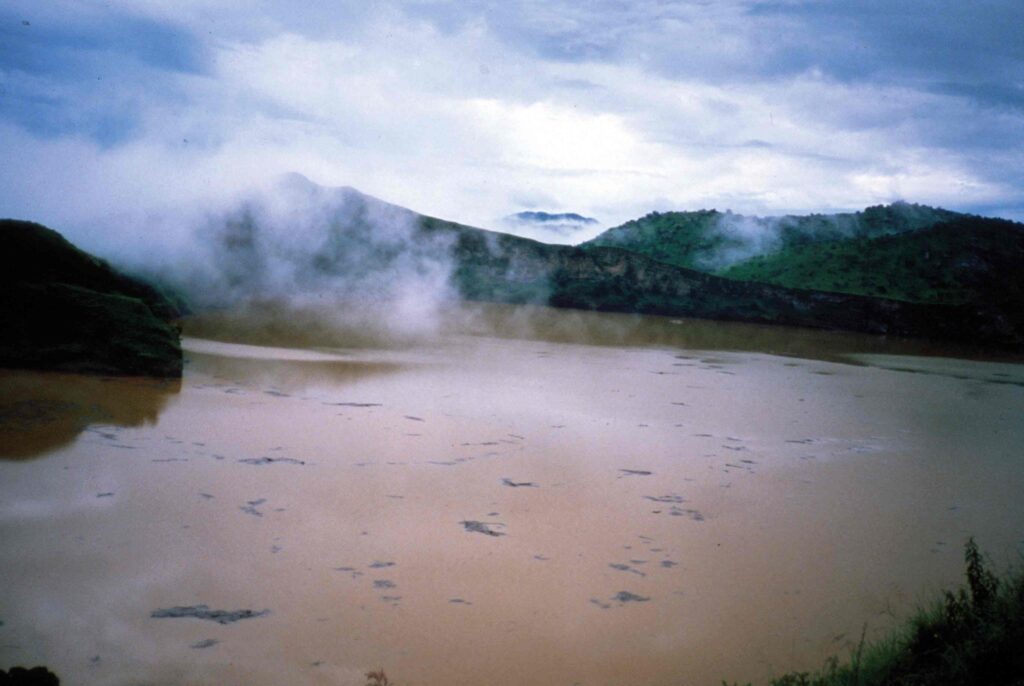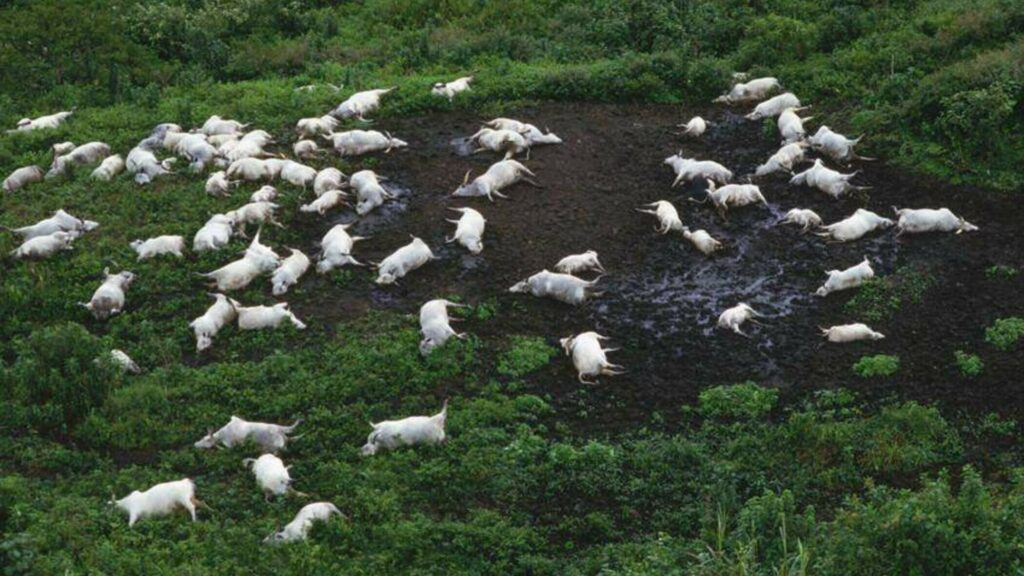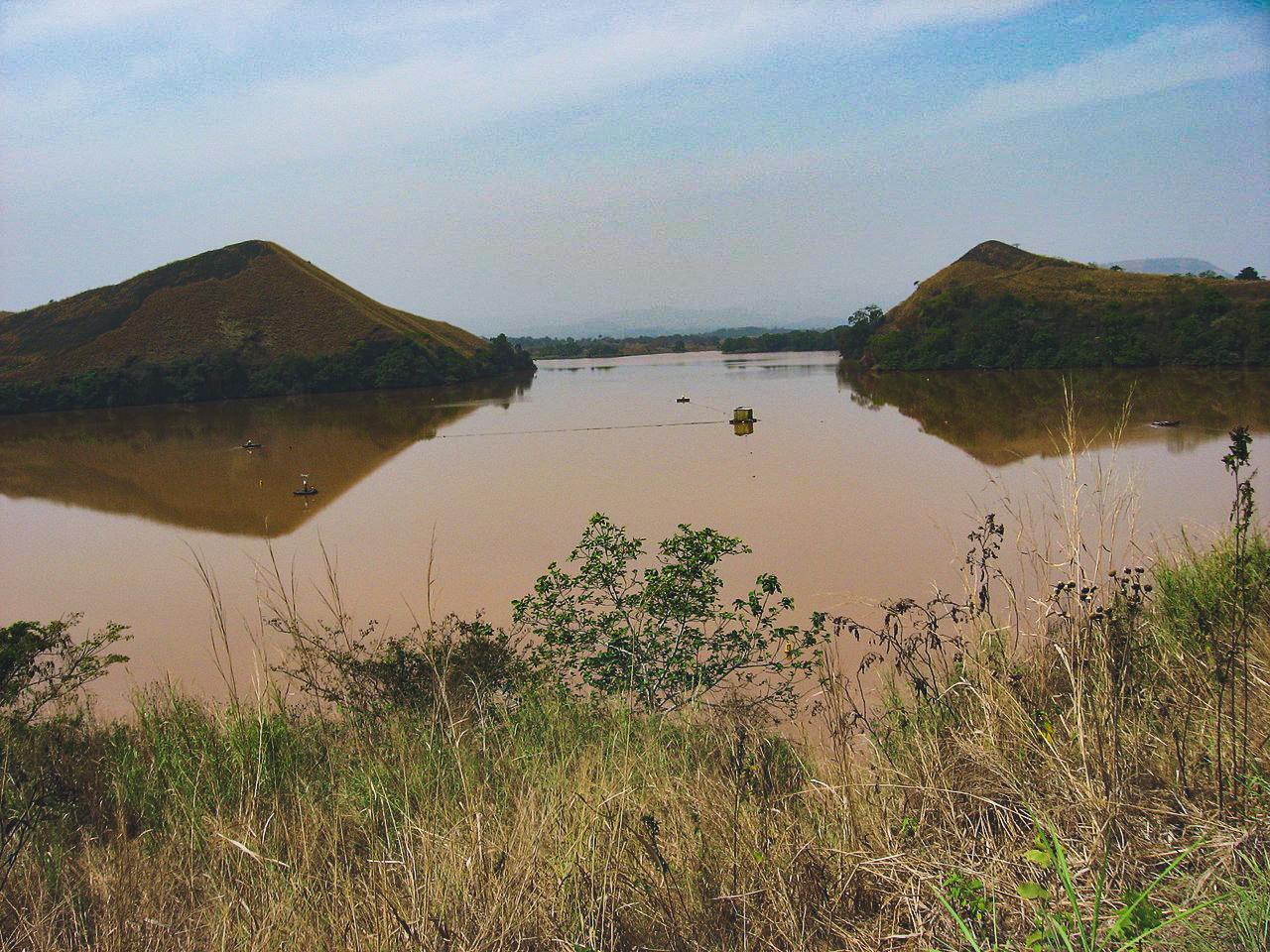Lake Lynos is a location in northwest Cameroon that is formed inside a’maar’ (flooded volcanic crater). It is a very deep lake that reaches a depth of 208 meters, and it is situated at a medium altitude on the slope of Mount Oku, an inactive volcano.

The waters are confined in its interior by a natural volcanic rock dam; an interesting fact is that they are rich in dioxide and carbon monoxide due to the volcanic rocks beneath them; this is the most essential information for understanding the explosion that occurred in 1986.
Limnic eruption of Lake Nyos
On August 21, 1986, a massive calamity known as a Limnic eruption occurred, which consisted a massive explosion of water that caused the water to be hurled 100 meters high, resulting in a form of destructive tsunami. The discharge of hundreds of thousands of tonnes of carbon monoxide and carbon dioxide gases caused this explosion.
As we all know, these gases are heavier than the air we breathe, therefore they reached all regions near Nyos, removing practically all of the oxygen.
The white-translucent cloud of carbon dioxide was 160 ft high, and 1.6 million tons of carbon dioxide was released. Descending to the villages below, the toxic levels of carbon dioxide (6-8 percent; the normal amount of CO2 in the air is 0.04 percent) caused immediate loss of consciousness and death. In one moment, people were eating and going about their daily lives; the next moment, they were dead on the floor.
The explosion killed nearly 2,000 people within hour! In addition, about 3,000 animals were killed. The sole survivors were only those at higher altitudes.

The authorities in charge of Lake Nyos have put CO2 dispersers on the water’s surface as a result of this horrific and unexpected natural calamity, preventing more lives from being lost due to the gas.
Eruption at Lake Manoun

The first fatal event on the record happened at Lake Manoun, which erupted two years prior to the Limnic eruption in 1984 and killed 37 people and animals. It was a less populated area so the damage was limited and under control.
What exactly caused the deadly Limnic eruption?
The exact cause of these events, however, is uncertain. Scientists have determined that it does take a specific set of conditions for limnic eruptions to occur, which are unique to these lakes. For one, they are located on the Cameroon Volcanic Line – Mt. Cameroon is one of Africa’s largest volcanoes, and last erupted in September 2000.
There is also a large magma chamber under these lakes that generates the volcanic gases, which then emanate into the lakes.
Because the lakes are so deep (Lake Nyos is more than 200 meters deep, and surrounded by steep cliffs), there is sufficient water pressure to hold the gases at the bottom. And because the climate is tropical, with warm temperatures year-round, the lake waters don’t mix the way they do in seasonal temperatures, which would allow for a slow release of the gases over time.
Instead, the situation is akin to a soda can that’s been shaken and suddenly opened, only on a much bigger, and deadlier, scale.
Scientists still don’t know exactly what triggered the eruption. There may have been an earthquake or volcanic eruption on the bottom of the lake.
There may have been a landslide or two that shifted the water at the top of the lake and allowed the gases at the bottom to come up. Or it may even be that days prior of rainfall cooled the surface of the lake enough to cause an overturning.




